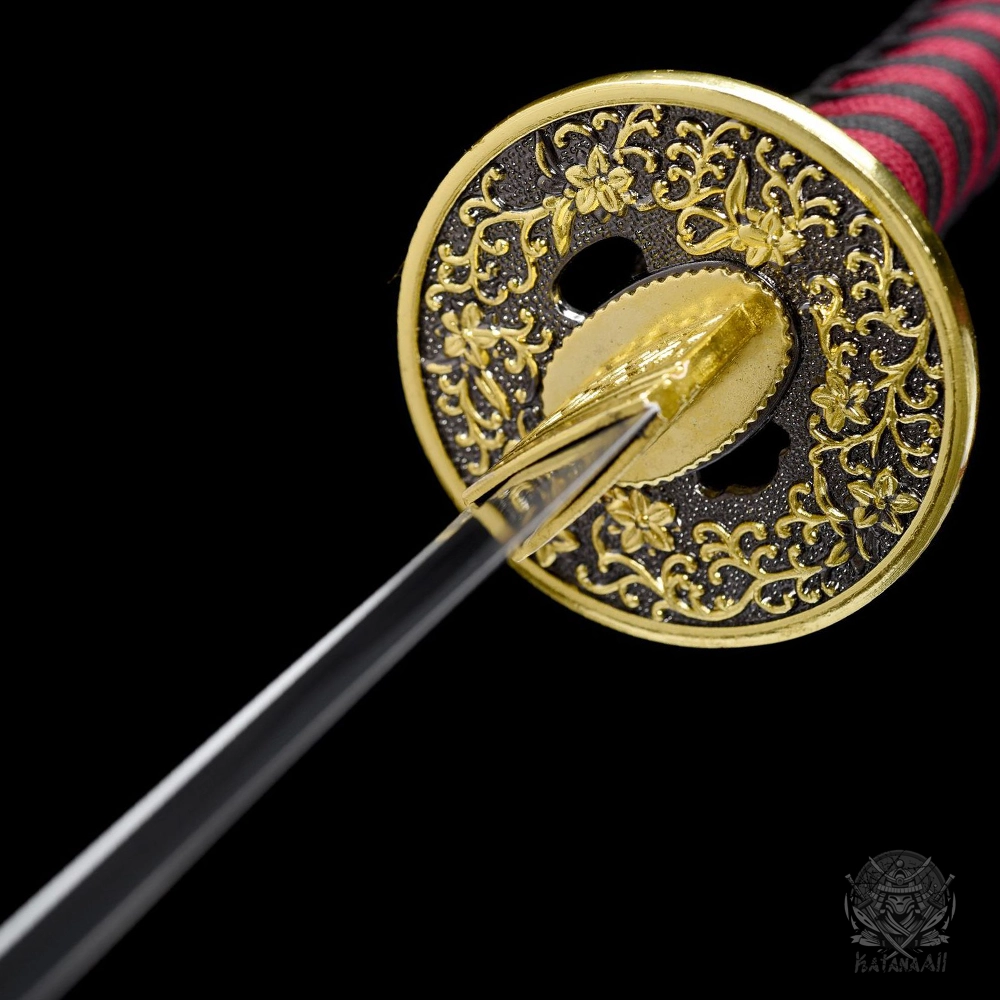How much does a katana weigh

The katana is more than just a weapon; it is a symbol of Japan’s rich history, culture, and craftsmanship. Whether you are a collector, martial artist, or enthusiast, understanding the weight of a katana is crucial in choosing the right one for your practice or collection. As a practitioner of Kenjutsu and a longtime admirer of Japanese swords, I’ve often been asked about the weight of a katana and how it affects performance. In this article, we will explore the factors that influence a katana’s weight, provide standard weight ranges, and explain how weight impacts its performance in martial arts.
Factors That Determine Katana Weight
A katana’s weight isn’t arbitrary. Several design elements and materials contribute to its overall weight. From the blade’s forging process to its fittings and intended use, the weight varies significantly depending on these factors.
| Factor | Influence on Weight |
|---|---|
| Blade Material | Traditional katanas are often forged from tamahagane (high-carbon steel), a material that adds both strength and weight. The folding process during forging adds density to the blade. |
| Blade Length and Thickness | Longer blades tend to be heavier. However, a thicker blade often leads to more weight, which can impact maneuverability, especially in Iaido or Kenjutsu. |
| Handle (Tsuka) and Fittings | The tsuka (handle) includes components like menuki (decorative elements), tsuba (guard), and kashira (pommel). These fittings contribute to the overall weight, with premium fittings adding more weight. |
| Purpose of the Katana | Iaito (practice swords) are typically lighter to reduce strain during long practice sessions, whereas bokken (wooden swords) might mimic the weight of real katanas for training purposes. |
Typical Katana Weight Range
When considering purchasing a katana, understanding its typical weight range will help you choose the right one for your needs. Below is a breakdown of the different types of katanas and their weight ranges:
| Katana Type | Weight Range (kg) | Weight Range (lbs) | Usage/Design |
|---|---|---|---|
| Traditional Katana | 1.0 – 1.5 | 2.2 – 3.3 | Primarily used for combat training and Kenjutsu, well-balanced for performance and durability. |
| Modern Replica Katana | 1.2 – 1.8 | 2.6 – 4.0 | Slightly heavier, often produced with modern materials. Suitable for collectors or display. |
| Practice Katana (Iaito) | 0.9 – 1.2 | 2.0 – 2.6 | Lighter design for safety and practice, typically used in Iaido and other sword arts training. |
| Decorative Katana | 1.0 – 2.0 | 2.2 – 4.4 | Heavier due to ornate fittings and design, not intended for practical use. |
The weight range of a katana can differ slightly depending on its maker, historical period, and specific use. Generally, a katana designed for combat will be lighter than those made for display or ceremonial purposes.
How Weight Affects Katana Performance in Martial Arts
The weight of a katana plays a pivotal role in its performance. As an avid practitioner of Kenjutsu, I can say that the weight of a katana influences not only how fast you can wield it but also how effectively it can cut through targets. Here’s how weight directly impacts your technique:
1. Balance and Speed
In combat and training, speed is paramount. A katana that is too heavy can slow down the wielder, making swift strikes or quick reactions difficult. Conversely, a light katana (such as a practice Iaito) allows for faster cuts and smooth movements during Iaido practice. For combat scenarios, a balance of weight ensures both precision and power without sacrificing agility.
2. Cutting Power
The weight of the katana, particularly in battle-ready models, contributes to its cutting ability. A heavier katana often has greater momentum, making it more effective for cutting through thick materials like tatami mats or even armor. Historically, a samurai’s katana was designed to deliver clean, decisive strikes with minimal effort.
3. Fatigue and Endurance
Long training sessions with a heavy katana can lead to muscle fatigue. This is why lighter practice swords (Iaito) are favored for repetitive movements and endurance training. However, for actual combat scenarios, a slightly heavier sword may provide better momentum for powerful strikes, thus reducing the need for excessive force.
4. Comfort and Handling
Comfort is critical for a sword’s usability, especially in Kendo or other martial arts where prolonged practice sessions are common. A katana with a poorly balanced weight distribution can lead to discomfort, making it harder to maintain form and precision during repeated cuts. A well-balanced katana will feel like an extension of your arm, offering fluidity in every movement.
Frequently Asked Questions (FAQ)
1. What is the weight of a typical katana used for training?
A typical katana used for training purposes, such as an Iaito, weighs between 0.9 to 1.2 kilograms (2.0 to 2.6 lbs). This weight range ensures a balance between ease of use and a realistic training experience without causing excessive fatigue.
2. Does the weight of a katana affect its cutting ability?
Yes, the weight of a katana can impact its cutting ability. A heavier katana typically offers greater momentum, which aids in delivering powerful, precise cuts. However, this also depends on the quality of the steel and the blade’s sharpness.
3. How do I know if a katana is too heavy for me?
If the katana feels cumbersome or slows your movements, it may be too heavy. A well-balanced sword should allow you to perform swift cuts without causing strain. If you’re practicing Iaido or Kenjutsu, a lighter sword might be ideal for beginners, while advanced practitioners may prefer a heavier sword for combat scenarios.
4. Can I customize the weight of my katana?
While the weight of a katana is primarily determined by the materials and design, some swordsmiths may offer customization options. Depending on your needs, you may be able to select a sword with a specific weight range or balance configuration that suits your training or collection.
5. Is a heavier katana better for self-defense?
A heavier katana can deliver stronger strikes, which may be advantageous in a combat situation. However, the overall effectiveness of the katana also depends on the skill and experience of the user. Agility, technique, and balance are just as important as weight in a real-world scenario.
Conclusion
Understanding the weight of a katana is essential, whether you’re a martial artist or a collector. The typical weight range for a traditional katana falls between 1.0 and 1.5 kilograms (2.2 to 3.3 lbs), offering a balance between performance and maneuverability. While a heavier katana may provide greater cutting power, it’s important to consider your own strength, technique, and intended use when choosing a sword.
In my own experience as a martial artist, I’ve found that the right balance in weight can make all the difference in achieving precision, comfort, and effectiveness. By understanding how weight influences performance, you’ll be able to select the ideal katana that suits both your training style and physical capability. Whether for practice, display, or collection, the katana remains one of the most revered and functional swords in the world.
